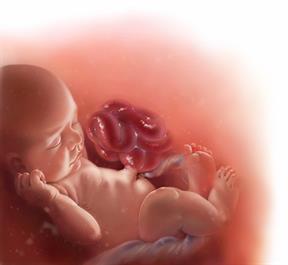An Open Hole in the Belly (Gastroschisis) in Newborns

Gastroschisis is an open hole in your baby's belly. It's congenital, which means your baby is born with it. It happens if the belly wall doesn't close early in pregnancy.
The hole in the belly wall is next to the belly button. It can be small or large.
When this happens, parts of your baby's stomach, intestines, and organs may be outside the belly.
What are the causes?
The cause isn't known.
What increases the risk?
A baby may be more likely to have gastroschisis if the mother:- While pregnant or just before getting pregnant:
- Smoked.
- Drank alcohol.
- Used drugs.
- Had poor nutrition.
- Took certain medicines.
- Had a urinary infection.
- Is younger than 25 years.
What are the signs or symptoms?
The main symptom is an open hole in your baby's belly.
How is this diagnosed?
Your baby may be diagnosed:- Before birth, when your health care provider sees the hole during an ultrasound.
- Soon after birth, during your baby's first exam.
How is this treated?
Gastroschisis is treated with surgery. Surgery is done soon after birth. There are two types of surgery:- Surgery that's done in one stage. All of the parts are put back into the belly at one time. The hole is closed with stitches.
- Surgery that's done in a few steps. This may be done if the hole is large or if the skin of the belly is too small to fit all of the parts at once. This method lets the belly grow and make room for the belly contents.
- In the operating room, a cover called a silo is put over the stomach and intestines. This protects them until they can be put back in the belly.
- Small parts of the stomach or intestines are put into the belly each day through the silo. This is done in the neonatal intensive care unit (NICU).
- Once the stomach and intestines are in the belly, the hole is closed with stitches. This is done in the operating room.
Where to find more information
To learn more, go to these websites:- Centers for Disease Control and Prevention at cdc.gov. Then:
- Enter "gastroschisis" in the search box.
- The Global Gastroschisis Foundation: averysangels.org
This information is not intended to replace advice given to you by your health care provider. Make sure you discuss any questions you have with your health care provider.

